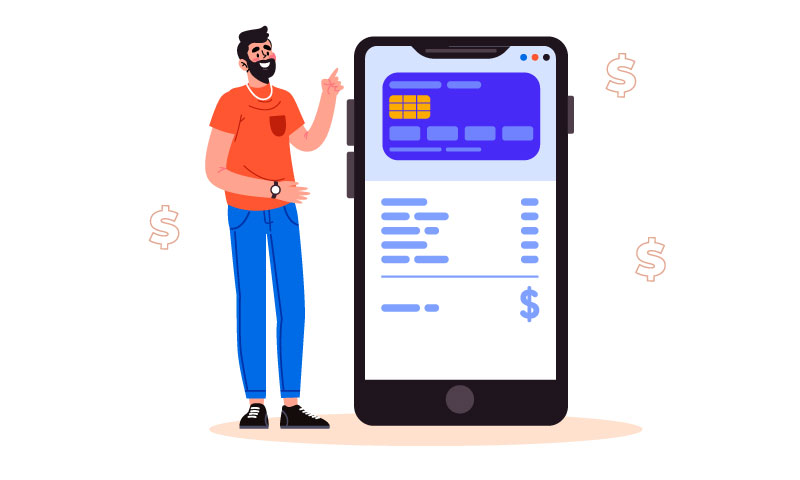
Since the past couple of decades, the Internet has become an indispensable part of our daily lives. Apart from socializing, working, infotainment, and research, one of the fields where Internet has turned tables is shopping.
We currently have a generation of young adults who don’t have any experience of a world without the Internet. As compared to previous generations, this generation and the following ones have more purchasing power, which is and will accelerate the growth of ecommerce. As of now, around 43% of consumers utilize the Internet and various social media platforms to get detailed information about a product before making a purchase and by the year 2024, the entire ecommerce revenue in the US only is predicted to touch $476 billion.
With such stats in front of us, it has become quite clear that remaining offline is not an option anymore if the retailers want to target their clients. With ecommerce websites, retail businesses can easily target untouched markets while gaining the must-required resiliency which is not possible with the traditional brick-and-mortar stores. Starting an ecommerce store gives you complete control as to how you want your products or brand to be perceived. So, if you have initiated your journey toward creating an ecommerce website, there are certain points that should be kept in mind. Let’s check them out one by one:

Selection of the Right Ecommerce Platform
It is critical to have the right ecommerce platform that is in sync with your brands’ and products’ requirements. There are three key ecommerce platforms, with different functionalities, to choose from, and their selection highly depends on the kind of business you own.
- Open Source: These open-source platforms offer the source code at free of cost, are easy to install and can be customized according to your requirements. However, it requires advanced coding expertise to manage an open-source ecommerce platform and there are security issues as well.
- SaaS: Another ecommerce platform known as SaaS or Software as a Service is available as a subscription. Usually, SaaS platforms are highly scalable, easy to use, and advanced security. Being designed particularly for ecommerce, these platforms can easily handle processes like payments and checkout. With SaaS platforms, pricing is the key concern as there is a monthly fee, add-on expenses for different plug-in apps, and transaction fees.
- Headless Commerce: In headless commerce platforms, you have the flexibility to keep CMS, PWA, and DXP, and other such technologies on front end with main ecommerce engine in the backend. With headless commerce platforms, you have complete creative control, thus leading to ease of marketing in lower costs.

Selection between Website Builders & Developers
An ecommerce website is similar to your business card; thus it is vital to make a smart selection between website builders and developers.
- Website Building with Website Builders: These website builders are simple tools that help you to create a website without any manual code editing. No expertise in programming language is required. With its drag-to-drop, intuitive editor, you can easily create a website with a customized layout. You can further make it responsive while integrating with other ecommerce tools and social media. Some of the popular website building tools are SquareSpace, Wix, Elementor, Weebly, etc.
- Hiring a Web Developer: If you are planning to hire a web developer, your ecommerce website will be created in a highly professional manner. Web developers spend an ample time on understanding your business and its requirements to create its online replica that would help you achieve the desired business goals.

Costing Involved
Several factors play their respective roles during the developmental process of an ecommerce website. Since no two businesses are similar, no standard cost is there that can be applied to all ecommerce sites. Based on the business requirements, the pricing vary.
- Development Charges: If your’s a small business with a limited number of products that you want to sell, then you can easily work with a basic ecommerce website with limited functionalities. Such websites can be easily hosted on BigCommerce or Shopify. However, if you are looking forward to a highly customized website, with personalized shopping preference, various features, user registration, and a wide range of products to sell, then here we are talking about a high-end website that may cost you at least ten time more than a basic ecommerce website.
- Hosting Charges: In hosting, you have different options to choose from. You can either for managed hosting where a hosting firm hosts your website while taking care of glitches or updates. Though a bit expensive, it leaves you free so that you can focus on core operations. Another one is shared hosting which is cheaper but has higher time lags during increase traffic and lesser customization options.
- SEO Charges: Creating a website isn’t enough; regular optimization and maintenance is equally important for which you require expert SEO services. Good SEO strategies can bring more traffic to the website, thus more leads. SEO services include various other aspects such as content, data analysis, etc. Now, the pricing entirely depends on which services you opt for and how large your website is.
Transitioning from an offline store to its online version can be a cumbersome task. With so many technicalities involved, you would want to have a one-stop solution or an expert like WIPL as your digital partner. With dedicated teams for every phase, WIPL makes the journey toward an ecommerce website a cakewalk. Be it ideation of your dream website, designing and development, hosting and maintenance, we have everything sorted for you.





 – A
– A 